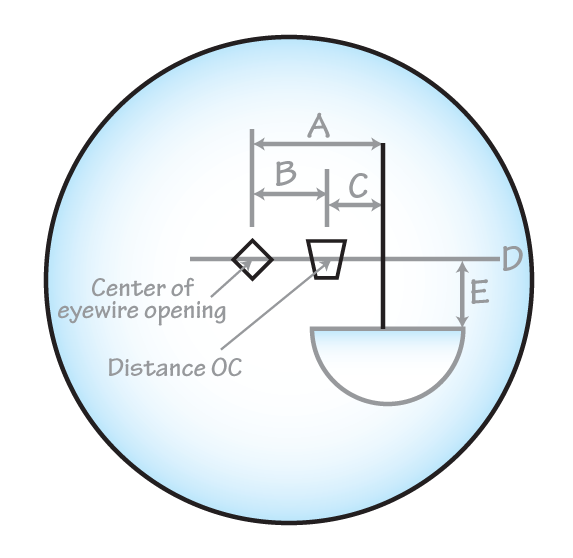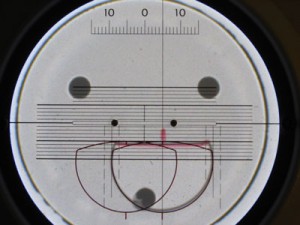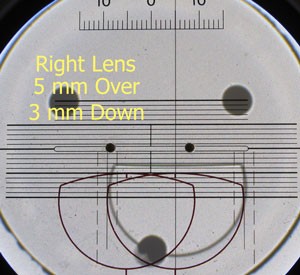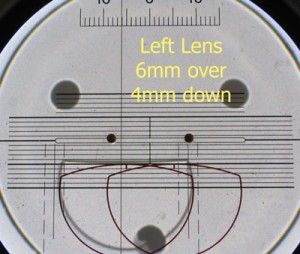Back to: 7: Finishing: The Optician’s Edge
Note: If your edger is set to “AUTO” and has no reason to run a job on “MANUAL” then you would (depending on your edger) probably block the lens with the center of the segment 5 over and 5 down. Don’t worry – the edger/blocker will remind you and guide you.
Boring but important…
For some reason, all tests for certification or licensure will include “inset”. An individuals eyes converge or shift nasally and downward when they are viewing things up close. The amount of shift between their far gaze and near gaze is the difference between their far PD and their near PD. Inset is the term used for that difference.
Inset serves NO PURPOSE in the daily life of an optician but be prepared to use it for exams.
(Side note: Average convergence is about 2.5mm per eye, which is what progressive lenses are usually designed with. However, free-form lenses will vary.)

- A = Total Decentration
- B = Distance Decentration
- C = Inset
- D = Half of B or 180 line
- E = Seg Drop

Prism in lined multifocals is ground in at the lab in relationship to the patient PDs and the segment. So, if the lab did the job correctly and you do the layout work correctly, the prism amount will be correct.
With few exceptions, lined multi-focals are finished using binocular PDs. Since you can see the line, if they were made with differing monocular PDs you would look at them and think that something was wrong.
Just as with single vision lenses, the calculations are made from the geometric opening of the eyewire.

The lens distance Rx, OC or MRP are ground in the lens by the lab. The vertical placement of the OC is usually placed about 5mm above the top of the segment but may be just about anywhere. The horizontal placement of the OC should match the patient’s BINOCULAR DISTANCE PD. The segment centers should match the patient’s BINOCULAR NEAR PD.
Example for a right lens:
Frame A= 50
Frame B= 36
Frame DBL= 20
Patient Near PD= 60
Segment Height Ordered: 15
70 – 60 = 10/2 = 5 mm each eye
36/2 = 18
18-15 = 3 mm down from center

Example for a left lens:
Frame A= 48
Frame B= 32
Frame DBL= 19
Patient Near PD= 55
Segment Height Ordered: 12
67 – 55 = 12/2 = 6mm each eye
32/2= 16
16 – 12 = 4 down from center

